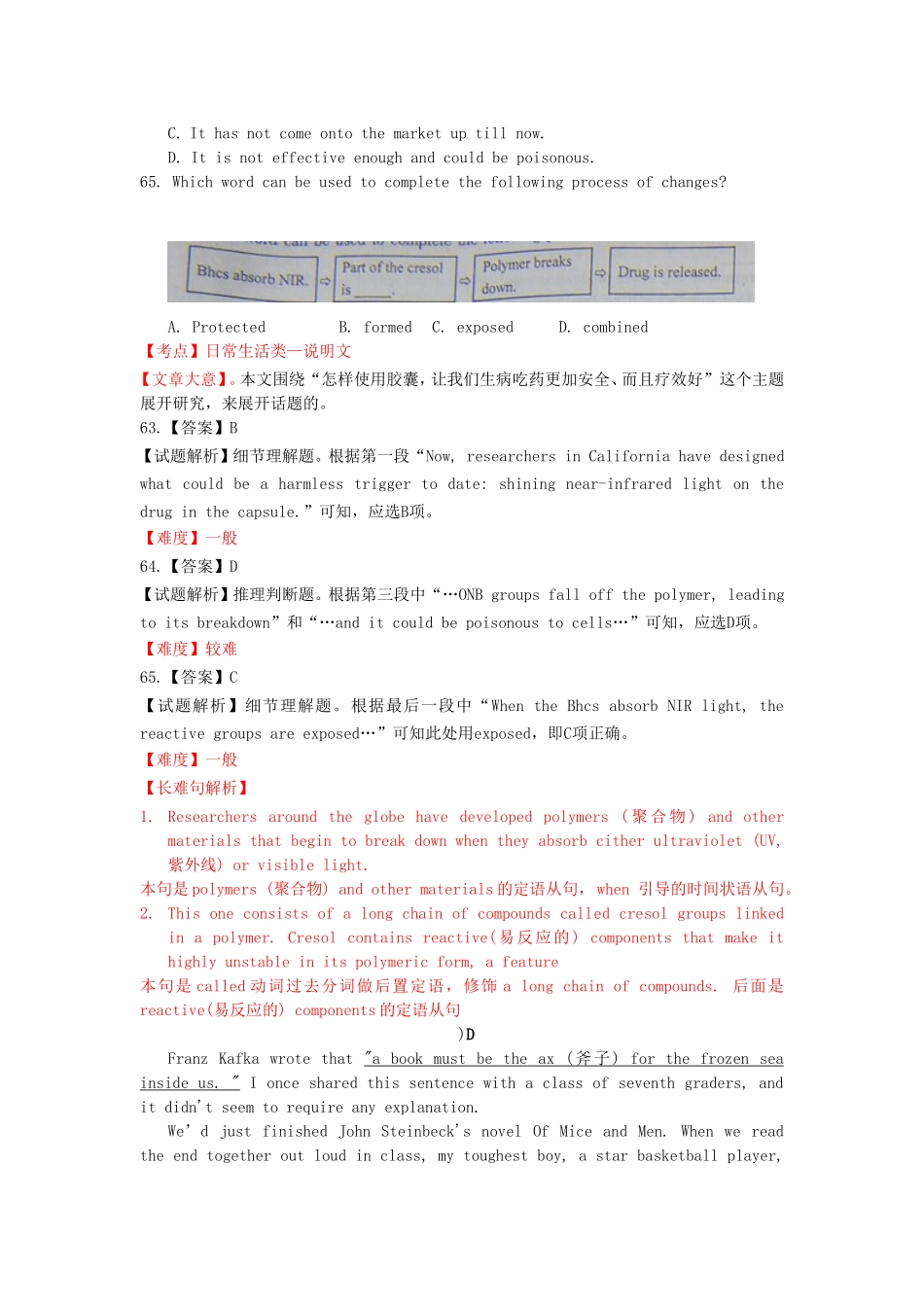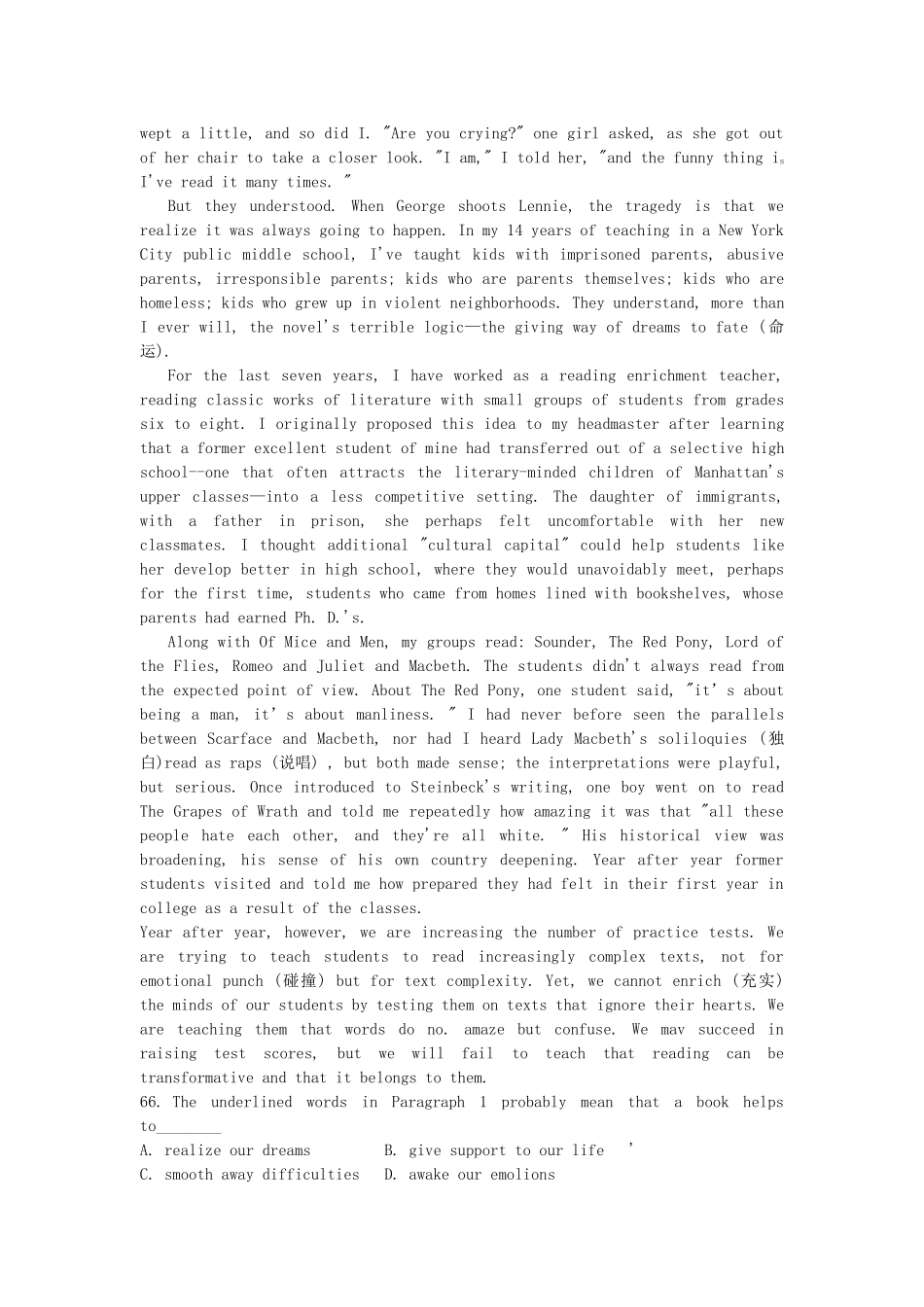日常生活类阅读(2012 江苏)CMedical drugs sometimes cause more damage than they cure. One solution to this problem is to put the drugs inside a capsule, protecting them from the body—and the body from them—until they can be released at just the right spot. There are lots of ways to trigger(引发) this release, including changing temperature, acidity, and so on. But triggers can come with their own risks—burns, for example. Now, researchers in California have designed what could be a harmless trigger to date: shining near-infrared light (NIR,近红外线) on the drug in the capsule.The idea of using light to liberate the drug in the capsule isn't new. Researchers around the globe have developed polymers ( 聚 合 物 ) and other materials that begin to break down when they absorb cither ultraviolet (UV,紫外线 ) or visible light. But tissues also readily absorb UV and visible light, which means the drug release can be triggered only near the skin, where the light can reach the capsule. NIR light largely passes through tissues, so researchers have tried to use it as a trigger. But few compounds( 化 合 物 )absorb NIR well and go through chemical changes.That changed last year when Adah Almutairi, a chemist at the University of California, San Diego, reported that she and her colleagues had designed a polymer that breaks down when it absorbs NIR light. Their polymer used a commercially available NIR-absorbing group called o-nitrobenzyl (ONB). When they catch the light, ONB groups fall off the polymer, leading to its breakdown. But ONB is only a so-so NIR absorber, and it could be poisonous to cells when it separates from the polymer.So Almutairi and her colleagues reported creating a new material fo...


